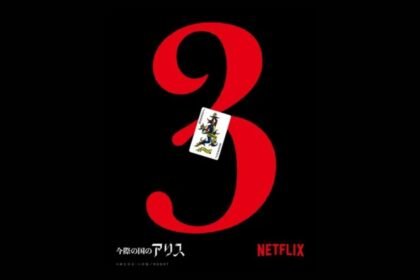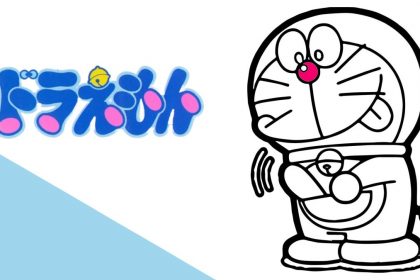The Isekai genre has taken the world of anime and manga by storm in recent years. It has captured the imaginations of fans around the globe, offering an enticing blend of fantasy, adventure, and escapism. In this article, we will explore the rise of the Isekai genre, its origins, its tropes and themes, its appeal to audiences, controversies surrounding it, and its future prospects.
The Origins of Isekai Genre
The concept of Isekai, which translates to “another world” in Japanese, has its roots in ancient mythology and folklore. However, it wasn’t until the 1980s and 1990s that Isekai started gaining popularity in the world of literature and gaming. Novels such as “The Chronicles of Narnia” and “Alice’s Adventures in Wonderland” transported readers to magical realms, setting the stage for the Isekai genre’s emergence.
In the realm of gaming, tabletop role-playing games like “Dungeons & Dragons” played a significant role in popularizing the Isekai concept. These games allowed players to assume the roles of characters transported to fantasy worlds, where they embarked on epic quests and faced formidable challenges. The immersive and interactive nature of these games provided a template for the Isekai stories to come.
With the rise of anime and manga in the late 20th century, Isekai found a new medium in which to flourish. The first wave of Isekai anime and manga, such as “El Hazard” and “Fushigi Yugi,” introduced audiences to the concept of ordinary individuals being transported to magical realms. These early examples paved the way for the explosion of the genre in the following decades.
Isekai Tropes and Themes
The Isekai genre is characterized by certain recurring tropes and themes that have become its trademarks. One of the most prominent tropes is the protagonist being transported from the real world to a fantasy world. This sudden displacement serves as the catalyst for their extraordinary adventures and encounters with mythical creatures and magical powers.
Another common trope is the overpowered protagonist, often referred to as an “overpowered main character” or “OP MC.” These protagonists possess exceptional abilities or knowledge, surpassing the inhabitants of the fantasy world they find themselves in. This power dynamic allows them to overcome challenges easily and often leads to wish-fulfillment fantasies for the audience.
Reincarnation and second chances are also prevalent themes in Isekai stories. Protagonists are sometimes reborn or transported to a new world after dying in their original lives. This offers them an opportunity to start anew and correct their past mistakes, leading to personal growth and character development throughout the narrative.
Additionally, Isekai stories frequently incorporate game-like mechanics and elements. The fantasy worlds often resemble video games, with the protagonists leveling up their skills, acquiring new abilities, and completing quests. These game-like aspects provide a familiar structure and appeal to fans who enjoy the immersive nature of gaming.
Further Readings: Why Isekai Anime is Enjoyable Whatever the Genre, Be It Comedy or Tragedy
The Appeal of Isekai Genre
The immense popularity of the Isekai genre can be attributed to several factors that resonate with audiences. One of the primary appeals is escapism and wish fulfillment. Many people yearn for a break from their mundane lives and find solace in the idea of being transported to a captivating fantasy world where they can embark on exciting adventures.
Furthermore, audiences often identify with the Isekai protagonists, who are typically ordinary individuals thrust into extraordinary circumstances.They represent the average person who dreams of a more exciting and meaningful life. This identification allows viewers and readers to project themselves into the story and experience the thrill of the protagonist’s journey firsthand.
Moreover, Isekai stories offer a chance for exploration and discovery. The fantasy worlds depicted in these narratives are often richly detailed, with their own cultures, histories, and landscapes. Audiences get to experience new and enchanting realms, immersing themselves in the wonders and mysteries of these fictional universes.
Another aspect that contributes to the appeal of Isekai is the power fantasy it provides. The overpowered protagonists allow viewers to vicariously experience strength and dominance, overcoming challenges effortlessly. It offers a sense of catharsis and empowerment, giving audiences a break from the limitations and struggles of their own lives.
Controversies and Criticisms surroinding Isekai Genre
Despite its popularity, the Isekai genre has not been without its share of controversies and criticisms. One common criticism is the perceived lack of originality and repetitive plots within the genre. Critics argue that many Isekai stories follow a formulaic structure, recycling similar themes, character archetypes, and narrative arcs. This criticism raises questions about the genre’s creative boundaries and its potential for innovation.
Additionally, some critics point out the overuse of tropes and stereotypes in Isekai stories. The portrayal of female characters, in particular, has been a subject of debate. Critics argue that female characters are often relegated to supporting roles or portrayed as one-dimensional love interests. This criticism highlights the need for more diverse and nuanced representations of women within the genre.
Furthermore, Isekai stories have faced scrutiny for their portrayal of self-insert protagonists. These protagonists often exhibit traits and behaviors that cater to wish-fulfillment fantasies, leading to accusations of shallow characterization and lack of depth. Critics argue that more complex and well-rounded protagonists would enhance the storytelling and offer a more engaging narrative experience.
Evolution and Innovation in Isekai
In response to the criticisms and the need for fresh storytelling, the Isekai genre has undergone evolution and innovation in recent years. Creators have started subverting tropes and expectations, injecting new twists and surprises into their narratives. They have challenged the notion of overpowered protagonists, introducing characters who struggle and face genuine obstacles, allowing for more compelling character arcs.
Moreover, there has been a blending of genres within the Isekai framework. Creators have experimented with combining Isekai with other genres such as romance, mystery, and even horror. This fusion of genres adds depth and variety to the stories, appealing to a wider range of audience preferences.
Furthermore, Isekai stories have begun to delve into social commentary and explore deeper themes. Some narratives address societal issues, such as discrimination, inequality, and the consequences of power. This infusion of social relevance adds layers of complexity to the genre and elevates it beyond mere entertainment.
Additionally, creators have been experimenting with narrative structures, deviating from linear storytelling. Nonlinear narratives, multiple perspectives, and unconventional plot devices have found their way into Isekai stories, challenging the traditional storytelling norms and pushing the boundaries of the genre.
Isekai Beyond Anime and Manga
The influence of the Isekai genre extends beyond the realm of anime and manga. It has made a significant impact on other forms of media, particularly video games and light novels. Many popular video games have adopted the Isekai concept, allowing players to assume the role of characters transported to fantastical worlds. These games offer immersive gameplay experiences and further expand the reach of the genre.
Light novels, a form of Japanese literature characterized by short chapters and accompanying illustrations, have also embraced Isekai. Numerous successful light novel series have been adapted into anime and manga, further fueling the genre’s growth and popularity.
The global impact of Isekai cannot be ignored either. Its reach has transcended cultural boundaries, gaining a substantial international following. Fans from different countries have embraced the genre, leading to localization efforts and the availability of Isekai content in various languages. The universal themes and relatable storytelling elements have contributed to its global success.
Future of Isekai
As the Isekai genre continues to thrive, its future prospects remain promising. The genre’s growth shows no signs of slowing down, with new Isekai anime, manga, and light novels being produced regularly. However, with the increasing number of Isekai titles, there is a potential risk of oversaturation and fatigue among audiences. Creators will need to find innovative ways to keep the genre fresh and engaging to sustain its popularity.
Furthermore, as audience preferences evolve, there may be a shift in the types of Isekai stories that gain prominence. The genre may diversify further, exploring new themes, settings, and character dynamics to cater to changing tastes. Adapting to these preferences will be crucial in keeping the genre relevant and appealing to a wide range of viewers and readers.
Conclusion
In conclusion, the rise of the Isekai genre in anime and manga has captivated audiences worldwide. Its popularity can be attributed to its ability to provide a sense of escapism, wish fulfillment, and exploration of new worlds. The genre’s origins in literature, gaming, and its subsequent transition to anime and manga have shaped its tropes and themes, such as transport to a fantasy world, overpowered protagonists, reincarnation, and game-like mechanics.
While the Isekai genre has faced criticisms for its repetitive plots, overuse of tropes, and portrayal of female characters, it has also evolved and innovated over time. Creators have been subverting tropes, blending genres, and exploring social commentary and deeper themes, pushing the boundaries of the genre and offering fresh storytelling experiences. The influence of Isekai has extended beyond anime and manga, making a significant impact on video games and light novels, and gaining a global following.
Looking ahead, the future of Isekai remains promising, but not without challenges. As the genre continues to grow, there is a risk of oversaturation and fatigue among audiences. To sustain its popularity, creators will need to find innovative ways to keep the genre fresh and engaging. Adapting to changing audience preferences and diversifying the types of Isekai stories will be essential.
In summary, the Isekai genre has captured the hearts and imaginations of fans worldwide, offering a gateway to exciting and immersive fictional worlds. Its enduring appeal lies in its ability to provide both escapism and relatability, empowering audiences to embark on extraordinary adventures from the comfort of their own reality. As the genre continues to evolve and expand, its impact on the world of entertainment is likely to endure, making Isekai a significant and influential genre for years to come.













